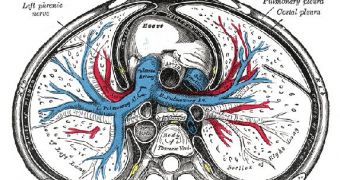Working in environments that mimic a human post-heart-attack heart, experts at the University of California in San Diego (UCSD) have recently managed to make adult stem cells differentiate into a force that can heal damaged heart cells. The new accomplishment is likely to raise the bar on how regenerative therapies for cardiovascular diseases are approached and performed in the future, the team says. The work could also influence a number of other treatments for other conditions too, they add.
The new results, which were reached a short while ago, were presented this week in San Diego, during the 2009 annual meeting of the American Society for Cell Biology (ASCB). In charge of the new experiments were scientists from the UCSD Jacobs School of Engineering Department of Bioengineering, led by expert Adam Engler. Their relentless work may represent a new ray of hope for the over 900,000 people in the United States that die from heart diseases each year. What this method essentially does is improve on an existing one of injecting stem cells directly into the scarred heart muscle, shortly after a heart attack.
In similar approaches, which have been dubbed cellular cardiomyoplasty, the stem cells are simply placed at the affected location. They are not stimulated into becoming useful for the heart via external sources. Rather, they receive their impulses from cells in their immediate surroundings, which have natural mechanisms of signaling that a change needs to be made at a particular location in the heart muscle. But the method sees the stem cells transform into small calcified lesions. They actually transform into bone-like cells, on account of the fact that the scarred and stiff muscle does not send the correct signals in its surroundings.
The method that the UCSD team is proposing relies on using a supportive material for the stem cells, one that would allow the cells to change stiffness over a longer period of time. “Our evidence suggests that tissue-specific stiffness arises from key developmental changes, which implies that cells should be cultured in the appropriate physical conditions that mimic embryonic tissue progression, from soft, pre-cardiac tissue at early embryonic age to a mature, less compliant tissue at the conclusion of development,” explains the first author of the presentation, UCSD bioengineering PhD. candidate Jennifer Young.
“Results from this study may not only have a profound impact on cardiovascular engineering, but may influence the way in which many regenerative therapies are conducted. In this instance we have studied the developing tissue as a model, and from it generated a set of design criteria to mimic in our new material,” concludes Engler, a UCSD Jacobs School of Engineering bioengineering professor.

 14 DAY TRIAL //
14 DAY TRIAL //